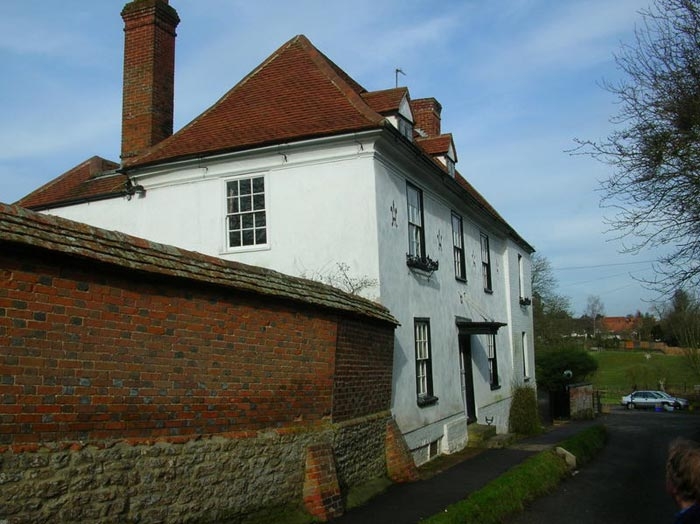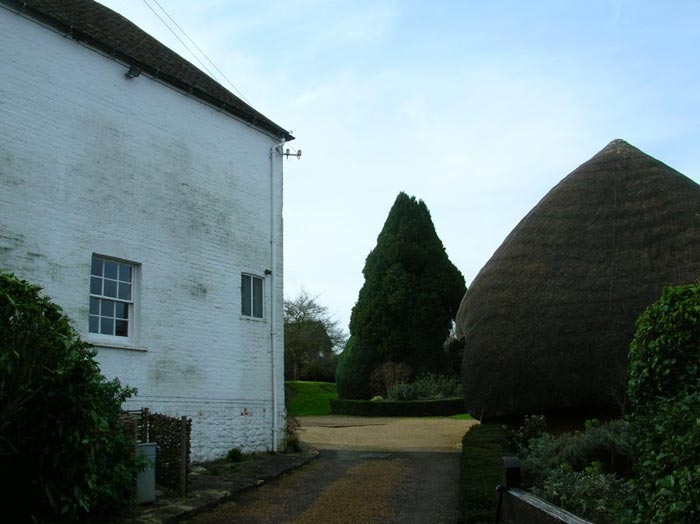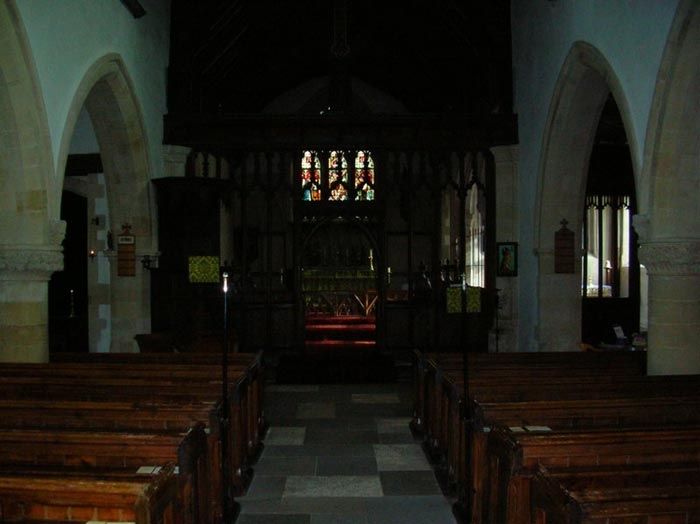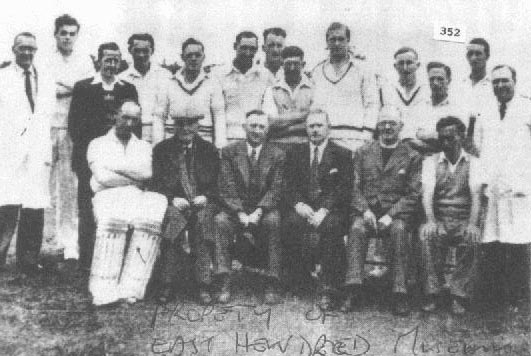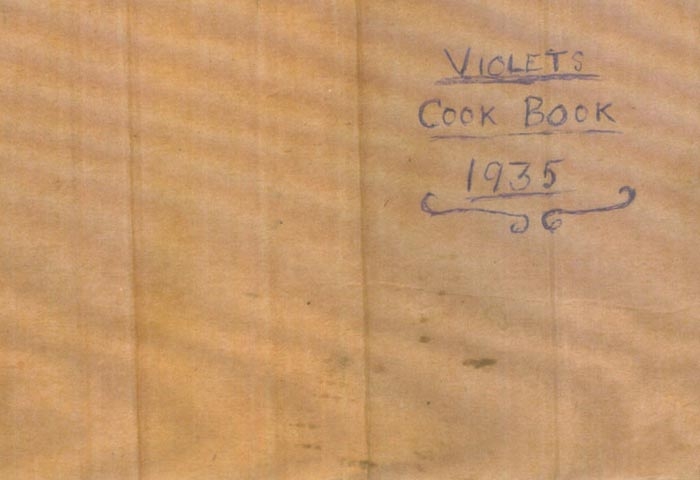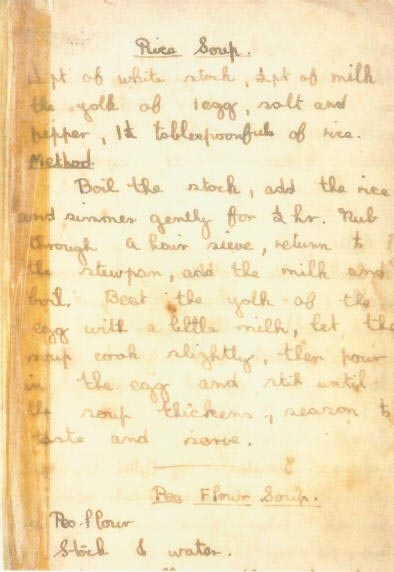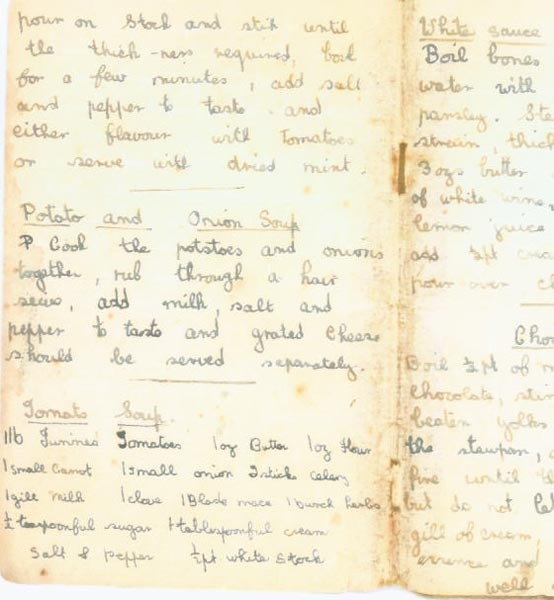H.S. Colt of East Hendred
by Tony Muldoon
April, 2008
Early in 2007, thanks to Martin Bonnar getting in touch with the curator of the East Hendred museum, I was able to follow up on the discovery that a lady who had worked for the Colt’s was very much alive and well, living in the village where they lived from 1915 until their deaths.The visit was arranged through her neighbor, Mr Stan Francis, who is proud to have lived in the village all his days. He was a most informative and congenial host “ with a couple of surprises up his sleeve. I’d like to thank Stan, his wife and Mrs Violet Goddard for their time and patience dealing with a man asking for information on a ghost.
I thought I was simply visiting people who had known him, but it became clear that this village has a real personality of its own; the peculiar circumstances and the history of the village need to be understood, for they help illuminate the life of Colt.
After getting in touch with Stan, and before we met, he made a few enquiries and visited some of the key reference points. On the phone he said to me: “Tony, in the village he was always referred to as Harry, but did you know his name was Henry?”
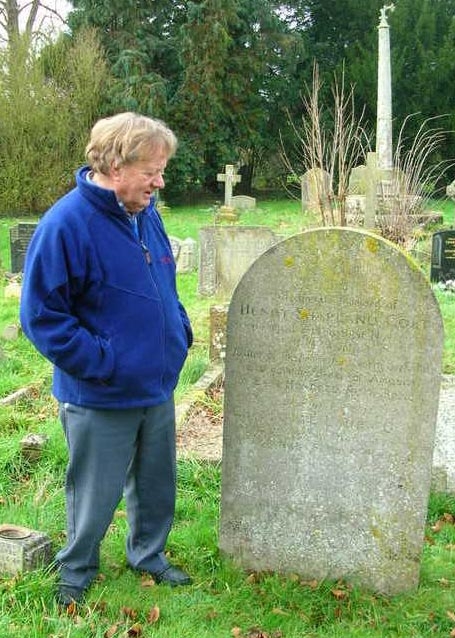
Stan with gravestone
Stan and his wife invited me to their house to meet Mrs Violet Mary Goddard, who had been the Colt’s cook from 1936 through her early married years until her daughter was born in 1941. Mrs Goddard (maiden name Sheppard) was interviewed by Hawtree for his biography ËœColt and Co’. She was surprised to see her comments in a book but was pleased to hear that he had written the following: “Mrs Goddard saw Colt as a very fair man. If he liked something, he said so. But he did not hesitate to say the opposite if he found anything disagreeable.” She smiled, and said that was exactly how she recalled him.
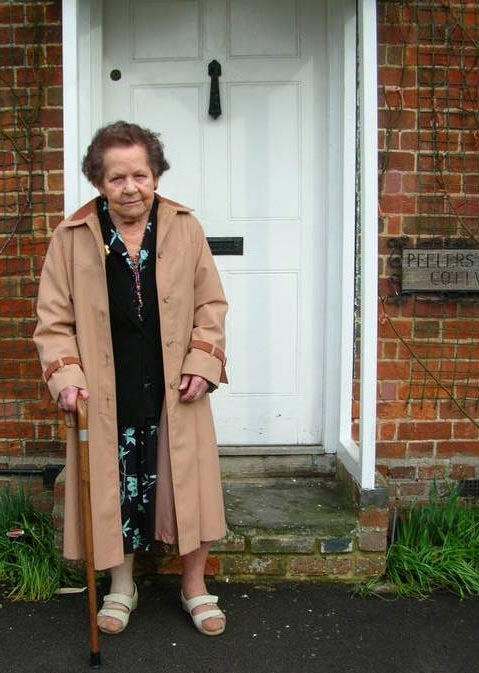
Violet Goddard
In conversation with her the portraits that emerge of the Colts as individuals are quite contrasting. Colt was tall, thin with red hair and was well over a foot taller than his wife. Laura was the more feared character of the two. Mrs Goddard remembered that one day she was late with her duties and decided to scrub the front doorstep without putting her stockings on. Colt noticed this and told her that in future she should always dress properly. She remembers being glad that he did not tell the lady of the house about this, as the reprimand would have been far more serious. Mrs Colt Ëœcouldn’t bear spending’ and their diet consisted mainly of vegetable soups from the garden and variety was provided by Colt returning from his various trips with a chicken or a pheasant. She said several times that if he liked something he wouldn’t hesitate to say so or pronounce it ËœDelicious’. Mrs Goddard still has the recipe book she worked from. She recalls that the Colts lived a rather old fashioned life, dressing each night for dinner and conversing with each other at full volume due to his deafness.
East Hendred apparently has a strong tradition of what we would now call ballroom dancing. Stan said that Violet was known as being especially talented and to this day retains an upright posture and takes good care of herself, looking sprightly and is still most careful about her appearance. She recalls a dance evening in the village where Colt was to give out the prizes; even today she glows with pride when she recalls how Colt complimented her on her pink dress and her friend Olive Clarke on her blue one. Olive Clarke was the Parlour Maid in the house and is also still alive now living in the nearby village of West Ilsley about four miles to the south. Conversation moved to Colt’s car and chauffeur after the war. Stan said as a child he was always taught to respect Colt and he recalls in the village everyone was taught to look up to Colt as the local JP. Together they recall his car with the registration BWL 1, and the driver Tink Mulford. Mrs Goddard volunteers that the Colts gave her the gift of the use of the Car and driver for their wedding day. Not only did she get a ride to the church but afterwards she and her new husband were taken to their honeymoon in Reading.
When I asked her about models of the courses being made on the dining room table by local schoolchildren, Mrs Goddard repeatedly apologised for not being able to remember more but smiling she shook her head and said: ËœIt was all such a long time ago.’I asked about some of the people of the village and about those who had worked for the company. She remembered the name Morrison but wasn’t sure why or if he had been to the house. Nor did she recognise him in the picture I showed her. The name Alison meant nothing to her. Emily Smith was recalled by Stan and Violet as somewhat formidable and well organised, and they were not surprised to hear she had been the firm’s secretary. Bella Dixie and Doris ËœTilly’ Hatto were others who had worked for the Colts. Tink Mulford had ended up as the landlord of the pub next door to them, The Wheatsheaf.
Colt was involved with all the social aspects of the village. He was a keen participant of the Crown Bowls and this Photo from 1933 shows him front row centre.
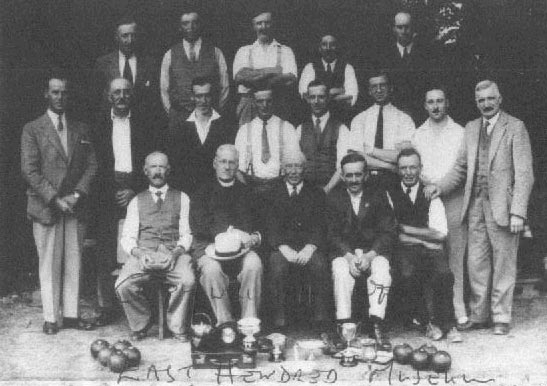
Hendred Bowls club
Albert Stone worked for the Colts as a Gardener/Handyman and was a Church Sexton, Clock winder and Bell Ringer. He’s sharing the drinks with Colt above. He was also Stan Francis’s Godfather. Stan does not believe that he was ever Colt’s Chauffeur. Albert Stone is front row right above, and the photo below shows a celebration with Colt and him toasting their success and the silverware won in 1933.
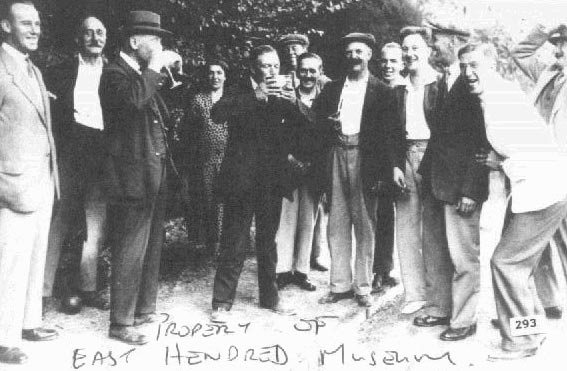
Hendred bowls trophy taken in 1933.
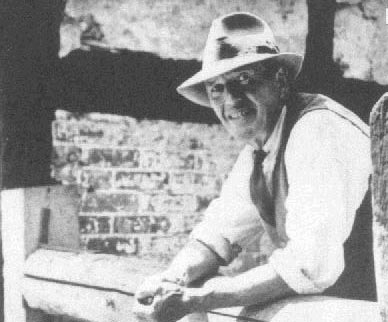
Albert Stone
We also know that Colt loved to watch the Village cricket team and it was through these societies and the local schools that he found many of his trusted employees.
Auguste Legouix followed Colt to East Hendred. Colt built a house for him in the village much expanded from the original (see the Hawtree book drawing.) Stan remembers being told of the internal dividers made with Ëœspare wood from the wings of old planes at a local RAF base’.
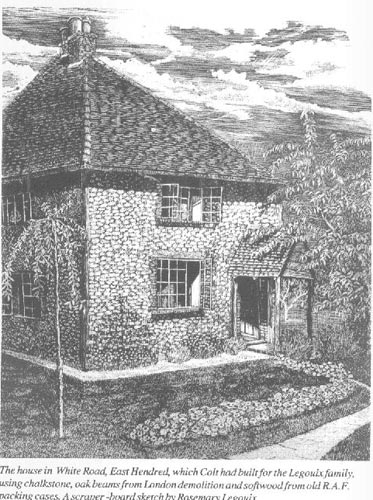
Hendred legouix house then and…
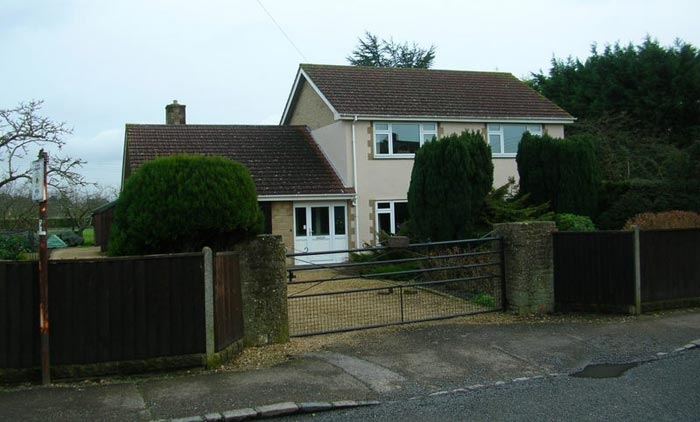
…today.
Legouix, originally from the Channel Islands, showed his independent character as a member of a free church. He went on to build a Ëœ4 Square Tabernacle’ church in the village “ although it, like the family, are now long gone. The Legouix family proved its resourcefulness by inventing a horse box design still in use to day by the trainers in nearby Lambourne.
After my meeting with Mrs Goddard, Stan took me on a tour of the village he has called home all his life. He loves the place and it’s easy to see why. About 12 miles from Oxford, East Hendred is so quiet and at peace that it’s still very easy to imagine what living there a century ago must have been like. Stan mixes his tour with facts on the history and also as someone who served over 45 years as a local councillor, the improvements and issues that occupy the villager’s thoughts today. For visitors to this country wanting to find a quiet, out of the way ËœEnglish’ village they don’t come much better than East Hendred.
In the Biography, Hawtree, time and again gives us examples of Colt’s tact and his adroitness in finding the right solution in delicate situations, finding the right place to live with his wife may well have been the greatest example of this.
Colt was 25 years old when he married Charlotte Laura Dewar on 24 April 1894, a practicing solicitor at Hastings in Kent. His wife was five years his senior and, unlike Colt, a Roman Catholic. Laura’s was a member of the Whisky family and her father had studied at Oxford for seven years, becoming a Reverend of the Anglican Church (Church of England) and held two benefices. Most unusually, in 1866, he converted to the Roman Catholic Church and three years later was ordained a priest. This conversion may have lead to an extra fervour in his daughter The marriage took place at the Brompton Oratory “ London’s most fashionable Catholic Church.
Mrs Goddard paints a portrait of Mrs Colt being clearly partisan in her views. When she had her daughter and named her ËœValerie Angela’, Mrs Colt told her that she should have named the baby Mary. Also when a girl from the neighbourhood got herself Ëœin trouble’, she had to visit the JP (Colt) to be signed off, his wife would enjoy pointing out to her servants when the girl was not a Catholic. Mrs Goddard, a protestant, felt this was demeaning and smiling added Ëœit was also, not always true. She could be a funny lady’.
Colt was also a keen church goer and for 28 years served as the Churchwarden of the Anglican Church, St Augustine’s. After his death he left his home to the Church for use as a Rectory, he had taken the greatest exception to the original building being sold off. The original Rectory is opposite the church and is now called Church Place.
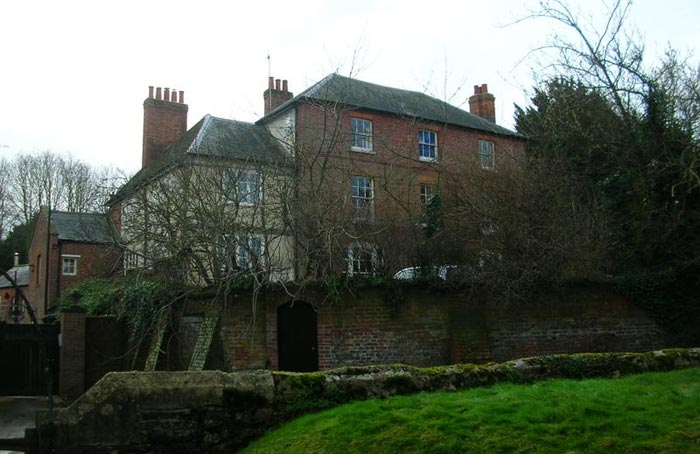
Church Place
St Augustine’s is well worth a visit, it’s most unusual architectural feature is a Ëœfaceless clock’ “ you tell the time from the sound of the bells. It’s one of the oldest clocks in the country. Colt took the greatest interest in the fabric of the ancient parish church. There are no records of the Roman Catholic Church in the village receiving any similar bequest bequests from the Colts.
Clearly it was imperative to find a home that would allow them both to practice their strong faith in the right Church. East Hendred fitted that bill almost uniquely with a long association with both faiths. In the Salisbury Register, Henry Chicele was rector of St Augustine’s in 1399. Although there is no record of him attending East Hendred because of the system of pluralities, he was a very important figure in both church and state. He founded Old Souls College, Oxford for the training of clergy and became the Archbishop of Canterbury. For many years the village has had two impressive churches able to coexist across the street from one another. St Augustine’s (C of E) and the Catholic St Mary’s which was built after the reformation circa 1860. Most unusually St Augustine has a private chapel built in the perpendicular style in the 15th Century by the Eyston Family as a Chantey Chapel and family burial place. It is still in the ownership of the Roman Catholic Easton family. Clearly this was a village that could meet both their religious needs. However Stan recalls that growing up, each Church had its own school and you went to one or the other and it marked you out. Jokingly he added that in a way: “it was a little like growing up in Belfast.”
The timing of their move to East Hendred in the middle of the Great War, is also interesting. The biography points out that one reason for Colt moving was the possibility of growing fruit but by 1915 Colt was doing quite nicely thank you and is it not likely that for someone of means a bargain could be picked up in the middle of a War? Clearly Colt was well established at this point; to take on a larger house at a time when future business prospects were uncertain is a move of a confident man.
In September 1917 he was able to formalise the break with Sunningdale GC. When he accepted the post of Assistant Food commissioner for the Southern Division of England he was able to resign his post as acting secretary. In future the club would retain him a as a consultant on agronomy matters and in `9`8 they made him an Honorary Life Member. Later, in 1924, he served a term as Captain.
St Amands, the house they moved into is medieval in origin with an 18th Century facade added; it was originally the residence of the Chaplain for the manor Chapel at Hendred House. Originally it sat opposite a barn and open space, as well as fields for fruit growing, but today it has a few closer neighbours. It has a garden divided into separate rooms after the innovative Arts and Crafts style of the time, and the Biography states that this was Colts doing. Today Colt’s home is back in private hands and was for many years the home of the late politician and historian Roy Jenkins. His wife lives there to this day.
Most importantly it is just a short walk of a couple of hundred yards down the hill to St Augustine’s Anglican Church with a further similar length journey on to St Mary’s Catholic Church. Mrs Goddard had by then become a Church Warden and was involved in receiving the house as a bequest to the C of E Church. Hawtree tells of the pair walking down the hill on a Sunday morning. At St Augustine’s, where Colt would tip his hat to his good lady wife and enter his church, then she continued along the lane to her own place of worship.
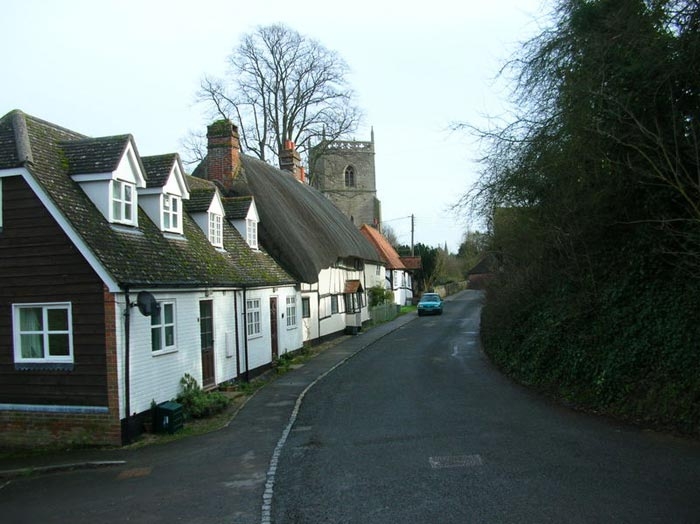
The walk
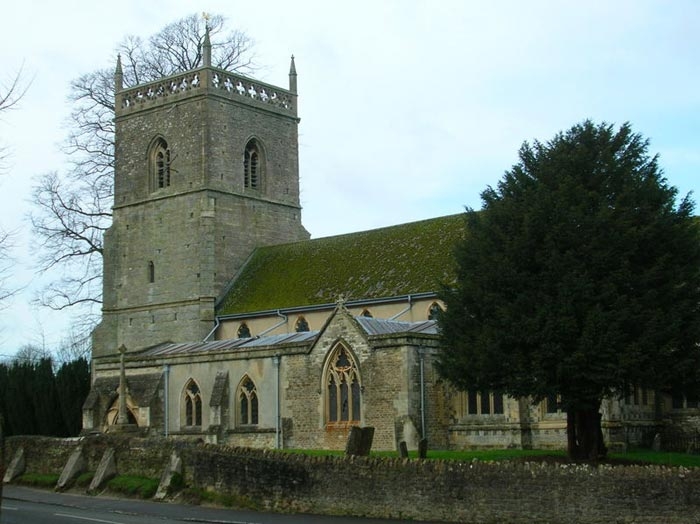
St Augustine
Around 1947 Laura Colt had a fall down stairs in the house and was in considerable pain until she died in 1948. Early in our conversation Stan referred to his Aunt, Mrs J Parker, and her daughter Clara, who were both nurses, looking after Mrs Colt towards the end of her life. As we walked from one church to the other I took some pictures and a car stopped and the passenger chatted with Stan. He said afterwards that it had been his cousin Clara and he hadn’t realised that they had provided daily care for the sometimes difficult patient, including getting her ready for bed. However after her death they received presents in appreciation of what they had done. Mrs Parker was given a grandfather clock that still stands in her house and Clara a nice broach. Mrs Colt had previously been involved in the local Nursing Association.
This picture is from the Museum and it may be the last one ever taken of Colt. It shows him in his overcoat with the local cricket team in the early 1950’s.
Their respective faiths divided the couple until the very end. Buried in separate churchyards, Laura alongside her brother who died whilst visiting them in 1928, Colt in the Anglican cemetery a few hundred yards away.

Henry Shapland Colt RIP 04-08-1869 to 21-11-1951 Golf Architect Justice of the Peace for North Berkshire who gave his house St Amands to East Hendred for a Rectory.
The End




